Minivans have become kind of like timeshares. Not many people seem to want to buy in.
Part of the problem is image. Minivans are the automotive equivalent of middle-aged ED.
Or at least, likely to be associated with it.
A much bigger problem for minivans is the availability of crossovers – many of which have everything a traditional minivan has in the way of kid-carrying/stuff hauling functionality except the sliding doors. Along with other features – like all-wheel-drive – not generally available in traditional minivans (the Toyota Sienna is the only new van that still offers it). These alternatives to minivans have made it harder to sell traditional minivans.
Note that GM and Ford don’t even try to sell them anymore. They’ve crossed over to crossovers 100 percent.
But another problem, arguably, is price.
Most of the remaining minivans are pretty expensive. The Chrysler Town & Country, for instance, starts at just $5 under thirty-thousand bucks ($29,995).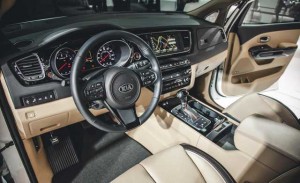
That’s before taxes and tags.
Its lower-rent sibling, the Dodge Caravan, is still affordable (base price $21,795). But it is a long way from being the smaller-scale luxury RV that the T&C is.
Then there’s the Kia Sedona.
It splits the difference.
Much nicer than the Motel 6-ish Caravan – but not nearly as expensive as the Town & Country (or the Sienna or the Honda Odyssey).
It’s also less minivan-y than they are.
And that is priceless.
WHAT IT IS
The Sedona is a full-size minivan available in seven and eight-passenger configurations.
Like the models it targets – the Toyota Sienna, Honda Odyssey and the Chrysler Town & Country – the Sedona is as much about luxury and technology as it is about utility and practicality.
But its price range – $26,400 to start, $39,900 loaded to the roof rails – is an easier swallow than the Sienna’s ($28,700 to start, $46,250 loaded) and the T&C’s five bucks shy of $30k to start.
WHAT’S NEW
The Sedona is all-new, a wheels-up redesign.
Family-friendliest price (and warranty coverage) of the bunch.
It’s quick. No, really.
High-line interior, especially when ordered with the folding-out, aircraft-style lounge chairs.
It’s basically a sporty crossover SUV … with sliding doors.
WHAT’S NOT SO GOOD
Drinks gas like a sporty SUV – 17 city, 22 highway for the SX-L trim.
For “safety,” many of the vehicle’s settings and apps cannot be accessed unless the vehicle is stationary – which is a hassle when you’re not.
In a very real way, minivans do not deserve their Mom Mobile rep. It’s not what they’re capable of.
It’s how they’re generally driven.
Pop the Sedona’s hood, for instance, and you’ll find almost 280 hp (276, to pick nits) from a direct-injected 3.3 liter V6. That is nearly the same output as one of the strongest V8 muscle cars of the early ’70s offered. That car being the ’73 Pontiac SD-455, which boasted a 290 hp rating out of 7.4 liters of four-barrel V8. The Sedona’s 3.3 V6 (less half the displacement) makes only 10 hp less than six-figure (today’s money) classic muscle car.
It’s stuffed in a minivan, sure. So it’s carting an extra 1,000 pounds or so, compared with the old TA.
But it’s still a potent little engine.
More potent than the Toyota Sienna’s 3.5 liter, 266 hp V6. Much more so than the Honda Odyssey’s 244 hp V6. The Chrysler T&C is the most muscular of the bunch – on paper: 283 hp from 3.6 liters. But the T&C is also the least quick, with zero to 60 requiring about 8.2 seconds.
The Kia’s in the mid-high sevens, which is speedy for a minivan and period. The fact is this minivan would give a ’73 SD-455 a run for the money, 0-60. The TA would win – but not by an embarrassing margin.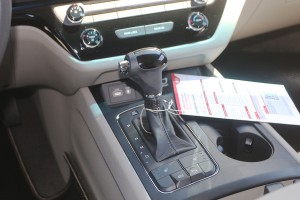
Which is kind of embarrassing… for the Trans-Am!
The downside – and this applies generally to the entire class of minivans – is that they drink fuel at nearly the same rate as an early ’70s V8 muscle car.
And the Kia is particularly thirsty.
The sporty-themed SX-L trim (which is the heaviest version) comes with a fairly appalling 17 city, 22 highway rating. The SX is a little better – 18/ 25. But that’s still low-20s/high teens, in average everyday driving.
In other words, about 5 MPG better than a V8 muscle car averaged. Without a four-barrel Holley sucking air. And with an overdrive transmission.
But in the Kia’s defense, the others – with one exception – are not much better: 18 city, 25 highway for the Sienna (16 city, 23 highway with the optional AWD), 17 city/25 highway for the T&C.
The exception is the Honda Odyssey, which somehow manages 19 city and 28 on the highway.
The Kia’s V6, like the others in this class, is paired only with an automatic (six-speed) and the only available drive configuration is front-wheel-drive. This includes Chrysler – which used to aggressively tout its AWD-available vans.
It’s not that AWD isn’t popular. Virtually every crossover SUV offers this feature. It’s that adding it really eats into the mileage (viz, the AWD Sienna’s hole-in-the-gas-tank 16 city rating).
People seem to be more tolerant of OPEC-friendly MPG numbers in crossovers – which are seen as rugged and sporty. Whereas minivans are supposed to be at least plausibly practical. But
V8 muscle car MPG numbers don’t fit that vibe.
Kia compensates for its hungrier-than-others engine by adding an extra gallon of tank capacity – 21.1 gallons vs. 20 for the Sienna and T&C. So you can go about the same distance in any of them.
You’ll just pay a little more to fill up the Kia.
The Odyssey also has a 21 gallon tank – and because its V6 drinks less fuel than the others, it can go farther on that tank than any of them: 588 miles on the highway vs. 506.4 for the Kia, 500 for the Toyota and the Chrysler.
When ordered with the optional hitch/trailering package, the Sedona can pull a respectable 3,500 lbs. – same as the Sienna and Odyssey, slightly less than the T&C (3,600 lbs.)
Kia worked hard on this thing to downplay the minivan meme. You notice this immediately when you observe the console-mounted gear shifter. The others all have their shifters mounted on the dash, toggle-style. It’s sensible and functional (frees up console space) but about as sporty as granny panties.
Then there’s the gauge package – pods and sport bike-like. Well, sporty crossover-like.
It’s a very different look, for a minivan.
The performance potential complements this. Nearly 300 hp will get almost anything going in hurry and the Kia will respond eagerly, if given the opportunity. Burnouts would be possible if the traction control didn’t step in to prevent it. Regardless, this minivan is fully capable of beating several sporty cars to the next red light, especially if you get the drop on their drivers.
Which is easy to do, because you’re in a minivan – and no one expects you to drop the hammer. 
Kia has done good work here. The six-speed transmission shifts quickly, but not harshly; the engine seems to want to run… .
Which is why it’s such a shame that the typical minivan driver isn’t interested in that. Hence the minivan “rep” as a left lane hog and general traffic clogger, a fact made all the more frustrating to those caught behind one because they know it’s not the van’s fault.
It’ll corner, too.
A 19-inch wheel/tire package is available (17s are are as aggressive as it gets over at Chrysler; the Odyssey’s largest whees are 18s). The Sienna is the only other van that also offers such sporting enhancements and it’s a close race between the two, as far as hustling through the apexes. Which is actually a lot of fun in a seven-passenger bus that weighs about 4,400 pounds empty – but keep in mind that price disparity.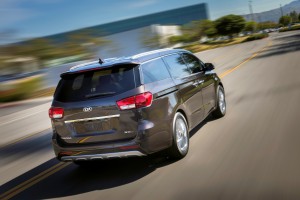
The Kia also looks more the part – or rather, less the part (of a minivan) and that adds an intangible. As a parallel, the Dodge Hellcat I got to test recently felt less fast than my old muscle car, despite the Hellcat having probably twice the power. Because my old muscle car was louder, had that air bag-free steering wheel, the sound of the big four-barrel sucking air through an open hood scoop.
The Kia does the same thing, minivan-wise. Toyota and Chrysler and Honda are still building minivans that look like minivans and so feel more like minivans, even when they’re comparably fun to drive (or could be, if you wanted to go that way).
Which brings me to… .
Building a minivan that doesn’t look like a minivan while still being a minivan in all the functional ways that matter to people who buy minivans is not unlike trying to make Rosie O’Donnell look good in a bikini.
Kia has pulled it off.
Coming at you, at least.
From that angle, the Sedona looks a lot like the Optima – which is a good-looking sport sedan that Kia has sold a bunch of. The other vans have front clips styled after their conservative family sedans, such as the last-generation Camry (Sienna), the pre-2015 Chrysler 200 (Town & Country) and the current generation Accord (Odyssey).
The Sedona’s Optima-inspired “bull-nose” front clip is much jauntier-looking than the Plain Jane faces of its rivals.
It looks sharp from the side too – via visual effects such as the appearance of a continuous sheet of tinted side glass extending from the windshield corners to the tail-lights.
Kia used a simple but very effective trick to do this. Instead of body-colored and upright B and C pillars, there’s are flush-mounted and rearward raked pieces of trim tinted exactly the same as the side glass. It makes it look as though the glass is a single unbroken panel from front to rear.
Even though the Sedona’s roofline isn’t the lowest of the bunch (that would be the Odyssey) and even though others sit lower to the ground (that would be the T&C) the Kia looks sleekest – the least like a minivan.
There is slightly less headroom up front (39.8 inches) than in more upright rivals like the Sienna (41 inches) but it’s a very small difference that most people are not likely to notice. But most people will probably notice the Kia’s significantly greater second-row legroom (40.6 inches, virtually the same as the driver and front seat passenger get) vs. the 36.5 inches in the T&C’s second row and 37.6 inches in the Sienna’s.
Only the Honda has more – 40.6 inches – which is what you’d expect from the master of maximizing interior space.
Still, the Kia is clearly better in that respect than two of its name-brand rivals – which both cost more, remember.
It’s a similar story, cargo-wise.
The Kia posts a very competitive 33.9 cubic feet behind its third row (with an extra-deep well) and 142 cubic feet of total capacity – vs. 33 cubic feet behind the third and 143.8 total for the T&C and 38.4 and 148.5 for the Odyssey. On this score, the Sienna is class leader, with 39.1 cubic feet of storage space behind its third row and 150 cubic feet total with the second and third row seats folded down.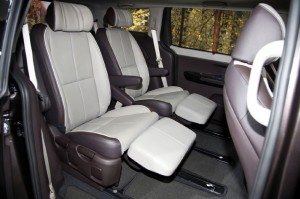
As noted up above, you can select either seven or eight-passenger seating, with the option to go with a set of really swanky “lounge” chairs that look (and feel) like what you’d find inside a corporate jet. These slide and recline, which is not uncommon – but they also have fold-out leg rests (which isn’t common). Add the optional DVD entertainment system and you’ve got a mini-me RV for road-tripping adults. Or, stick with the standard chairs – which fold up forward against the driver and front seat passenger’s chairs – eliminating the need to physically remove them from the vehicle to make the most of the available interior volume.
Other neat Sedona features include outside rearview mirrors that tuck when you park and leave the vehicle and untuck automatically upon your return, an available refrigerated glovebox, rapid charge USB ports and Kia’s UVO/Bluetooth/wireless interface and apps.
There is one area where the Kia is very much a minivan: Its Safety Nazi impediments to accessing/changing many of the electronically adjustable functions while the vehicle is moving – and the glacially slow open/close rate of the higher-trim model’s automatic sliding side doors and liftgate.
Here it is exactly like the Sienna and other traditional vans. God help you if you’re in any kind of hurry. Push the button and then – ever so slowly – the liftgate begins its crippled-up dance. You could eat a ham sandwich in the time it take the thing to open and close – and because it is attached to electric motors, the thing fights you if you try to hurry the action along by manually slam the thing closed or pull it open.
The non-gimpy (and in a hurry) will prefer the manual opening (non-electronic) sliders and liftgate. Unfortunately, they are to be found on the lower (L and LX) trims only – which puts you in a bind if you want stuff like the “lounge” chairs or the DVD entertainment rig or the sporty enhancements that come with the SX and SX-L.
THE BOTTOM LINE
It’s still a minivan, of course.
But if you’re interested in one that looks (and drives) like something else, the Sedona might just be the ticket.
If you value independent media, please support independent media. We depend on you to keep the wheels turning! As you can see from the pie chart (on the main page, top right column) we’re way low at the moment. Please help, if you can.
Our donate button is here.
If you prefer to avoid PayPal, our mailing address is:
EPautos
721 Hummingbird Lane SE
Copper Hill, VA 24079
PS: EPautos stickers are free to those who sign up for a $5 or more monthly recurring donation to support EPautos, or for a one-time donation of $10 or more. (Please be sure to tell us you want a sticker – and also, provide an address, so we know where to mail the thing!)


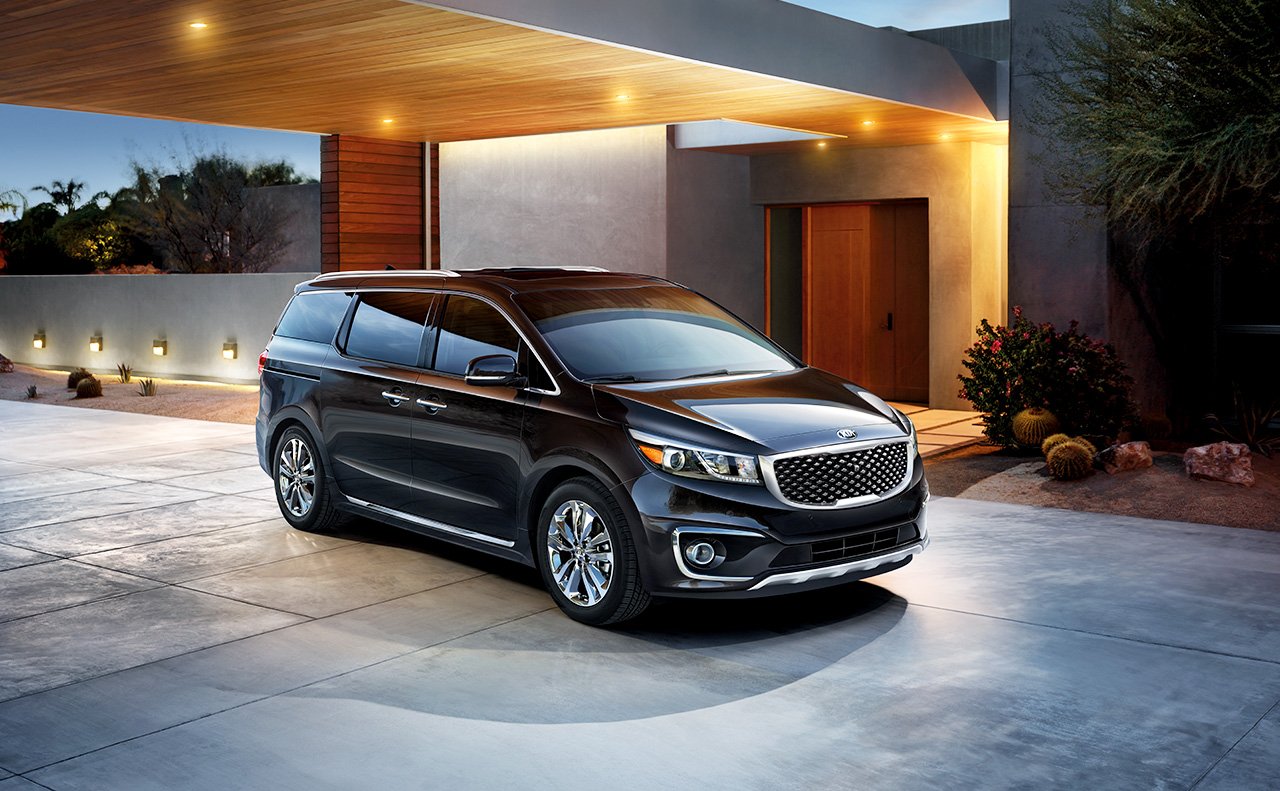

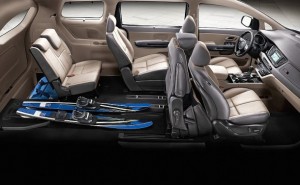
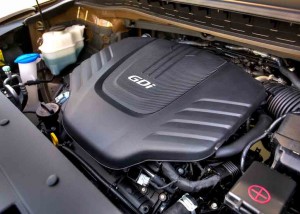
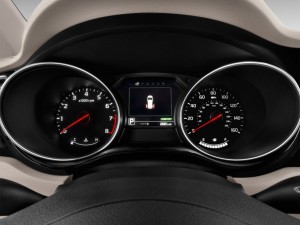

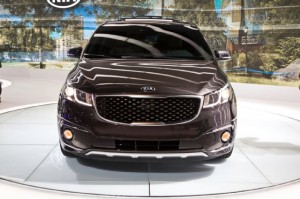







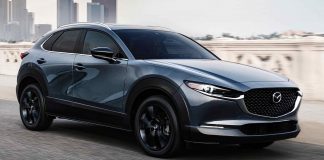
I would consider one of these but I have heard horror stories about KIA reliability. That said, how insane is it that the Sedona at 276 HP has:
– 4HP less than my old ’93 Turbocharged Typhoon
– 10HP more than my old ’74 Pantera GTS
– 16 HP more than my old ’84 Impala SS
– 71 HP more than my old ’80 Ferrari 308
– 1 HP more than my old ’70 Dodge Dart Swinger 340
Times have changed.
Hi John,
Indeed!
It’s boggling to me that we’re become habituated to power/performance that would have been “exotic” even 20 years ago.
I must install aluminum heads (and a roller cam) in my ’76 Trans-Am. The 455 (which I built about 15 years ago) makes maybe 320 honest horsepower.
Out of 7.4 liters (455).
This simply will not do.
Except almost all the drivers of these modern vehicles can’t seem to find more than 85 of their horses.
Love our minivan.
More room than a crossover/SUV, usually better visibility as well, and until recently minivans were much cheaper than crossovers/SUVs.
Our 2004 Grand Caravan was $25,000 out the door, with everything except heated seats – that would be equivalent to around $32,000 in 2015 dollars, so today’s vans are much more expensive as Eric notes.
There are some decent lease deals, so rather than buy I’d lease if I had to replace ours.
Locking out those controls makes the drive less safe, not more.
It’s a real pain to have to come to a halt in traffic to hit a single button that won’t ungrey until the car is at a stop.
Brent, that was it. They were nice if you bought a people hauler. Rode well, ran well and got good fuel mileage. They were reliable too. Of course they were a van and that’s not really my thing. If it doesn’t have the engine out front with a hood to cover it I’m not into it. And that’s one reason I’d never buy a Ford pickup. What insanity to remove the front clip and body to do just about anything to the engine.
Those people who bought them and then found out the hard way were always defending them. Well, I just never had to do anything to a Ford. Yep, you took it to somebody and paid through the nose and that was the old style with an accessible engine. Hell, let’s just drag it into the barn and spend a few weeks tearing it down to an engine, a frame and a bed, replacing something like those bad head gaskets on the 6 L diesel and then put it all back together with a couple dozen line up punches and lots of cussing and head scratching.
I’m amazed Ford is still in the pickup biz.
Eight, why do you turn everything into slamming Ford? If it’s trolling it’s worse than Clover’s because I don’t find schoolboy brand banter entertaining.
Four little words: “Fix Or Repair Daily.”
Or, ‘Found on road dead’?
Maybe it was because I spent my life working on them. In the middle of nowhere, overheating, transmission slipping and dying POS for the most part. If I had to drive a Ford, it would be a manual. I think it has something to do with being stranded. There are no phones down a 30 mile long dirt road. Later in life, Motorola, if you weren’t in an inaccessible radio spot, saved the day many times. Ford pickups in west Tx. should have come standard with a 100 watt FM transceiver.
I dunno, Dodge’s didn’t do that, GM’s didn’t do that. Sorry you’re not entertained. Me either.
We were discussing Astro vans and you turn it into a Ford rant. Whatever exchange I have with you, you make it a Ford rant, knowing full well I own Fords.
BTW, slipping transmissions and overheating are usually the by products of neglect. Many a time people take care of vehicles of one brand and neglect those of another and then consider the later vehicles to be pieces of sh*t. That’s in part how Honda and Toyota made such inroads, they convinced people who didn’t take care of their Chevys, Fords, and Dodges to have their Hondas and Toyotas serviced regularly.
Slipping transmissions in Fords were very common on brand new trucks I had to drive. Not being able to pull a 15KW pot up a pole on a pole ginny is pathetic. Not being able to power the alternator that powers the Auto Crane without overheating is pathetic. Running through a mud puddle and drowning out with a brand new truck, when other brands haven’t had an issue with it isn’t the sign of a good design.
You don’t drive Ford trucks, you drive a Mustang. I have no problems with Mustangs and think they’re good looking cars. Many of my friends have had good Mustangs that were a lot of fun and lasted as well as any of the pony cars.
I never owned a Mustang for the best reason there is, I couldn’t afford one with all the pickups I needed, not desired. It was the same reason I never owned any pony car although I would have liked to. Lots of difference between wanting and needing. Pulling trailers, needing 4WD and hauling feed and hay isn’t a strong point of any pony car I’m aware of.
I never had a vehicle of any sort I didn’t take good care of regardless of the brand. I needed them to perform.
The DOT that stopped me today didn’t write me up for no windshield washer fluid, a situation I’m not going to pay for on some one else’s truck. He did comment that all the glass was exceptionally clean. I’m guessing his not writing me up for something I can’t control but do a good job otherwise had something to do with it.
“If you know how many bales of hay you can fit in your Camaro, you might be a redneck.”
One thing about new Kias in general…..their styling is becoming nice. So nice in fact, that they often catch my eye. It’s derivative of course, from upmarket Euro models. But they are executing so well, they often look better than the cars they set out to emulate.
When you mention that this Sedona is relatively fast, the combination is almost enough to make this Sedona the first Korean car I ever would consider purchasing. (“If,” that is, I were in the market for a minivan.)
But the comments here remind me of how lacking in quality and reliability the Koreans were….and very possibly still are. Even if a 10 year warranty covers much of the financial fallout, the time spent dealing with mechanical grief just is not worth it.
Agreed on the styling Mike. I really like the Optima. Best looking sedan out there in my opinion. The mechanical parts just need to catch up with design.
If that’s the Mercedes knock-off I’d have to agree. When they first appeared I wondered why Mercedes was selling so many cars and then I eventually saw the Kia logo. GM and Ford would have been ahead to do the same thing. Reckon Mercedes was flattered or irked?
I’d give Kia a shot at this point because the hardware is pretty much the same as Hyundai – and Hyundais (recent) appear to be on par with others, quality/reliability-wise. My mother-in-law bought a Sonata last year and – so far – loves the car.
Tough to do. I generally buy used cars when they have 80-100,000 miles on them. The one Kia I have owned in the Taxi fleet fell completely apart at 100,000 miles. Its a 2011. When I see people commonly driving Korean cars to 200,000 miles and talking good about them at that point, I may consider them. Until then, I will stick with Japanese stalwarts like Toyota/Honda. To a lesser extent Nissan. In trucks and SUV’s, GM has always worked well for me too. My 05 Denali XL has 142000. Never done more than regular maintenance since I purchased it with 102000.
Nice review.
I concur with the comment that Kia dependability is questionable, to me. They took that van off the market for a few years due to the problems with it. Kia has some nice autos, not sure the van is one of them.
Wish the auto reviewer would include something about dependability of the auto, in their write up.
Hi Bob,
Thanks!
It’s hard to judge the long-term reliability of a new car until it’s been on the road for some time. I agree, though, that Kia has had issues in the past.
However, their recent stuff appears to be much better!
My daughter bought a Sephia back shortly after Kia came to these shores. The 100k drivetrain warranty was not yet in effect, but her grandfather convinced her to spring for the extended warranty. She had the tranny (auto) replaced 2x under that warranty, then traded the car when it was about to expire. But that was several years ago. Hopefully they are better built these days.
Wish GM still made a van. You still see lots of the Pontiac Trans-sport vans and its (u-Van) sibling, olds. Wish they made a 2016 version of it, today.
The Traverse is not the same, to me.
Those vans ran forever with the 3.8 v6. ( it was hard to work on the engine…no thought put to the servicing of the auto). Not bad mileage on trips, I found.
Oh, God…the interior was cheap…where did they get that odd dashboard and radio?
It sure did haul quite a load. The sliding doors were nice.
Parts were cheap,, too.
Progress has not improve my driving experiences, I found.
All this tech crap, I don’t use 25% of the junk. It is just a marketing tool to sell you more junk, data plans and subscriptions that I do need or want.
Why cant I select what I want? No xm radio, texting, touch this or that, apple play, or voice activation junk. Trashy and crowded interfaces that keeps changing like my cell phone downloading apps I did not ask for.
It is all electronics, why cant you reprogram it? Give me a new interface.
bob, if they gave you a choice you wouldn’t buy all that shit…..simple enough. I recall when cruise control finally came into its own, became reliable. Along about 40 or so, when I quit driving everywhere via Cincinnati Microwave, it seemed like a great deal. To be honest, back in the mid 70’s when we just wanted to maintain a certain speed it became very convenient and likable. The only reliable cruise controls bad then were the ones on Olds and Buicks. Rarely were they found on Chevy’s or Pontiac’s for some reason. Nothing was reliable on Caddy’s.
Ford and GM stopped making minivans because their offerings morphed into junk even before the warranties expired and few people came back for another lemon. Primarily fleets and governments were stuck buying them due to bargain basement pricing.
Sedona may be roomy, stylish and powerful at a bargain price but it carries a lousy reputation for long term reliability. Once bitten, twice shy.
Agreed CC.
I’ve never owned a worse vehicle than a Kia. And I owned a few Chevy Venture minivans as taxi’s. My 2011 Kia was right on par with 99-2000 Ventures as far as reliability is concerned. But unlike the Kia, the Ventures parts were cheap.
A lot of people thought well of the smaller van they made on the S-10 platform. They came in all wheel drive and performed well with the 4.3 engine. I knew people who pulled their boats with these and loved them. They were good as people haulers too but GM never advertised them much and they didn’t sell in large numbers.
Was that the AstroVan? They were made for a long time. Never really updated just slogging along through two generations. Never really advertised or marketed. The Astro was just there for a very long time. Still see one on the road now and then. Usually in the form of beat up tradesman vehicle.
https://en.wikipedia.org/wiki/Chevrolet_Astro
A former neighbor had an early Astro. He put about 500k on it over 20 years. And probably half a dozen transmissions, several A/C compressors with various other components, radiators and heater cores, all sorts of electrical switches. Factory paint fell off in sheets, the GM repaint fell off in small pieces. Practically all interior plastic components turned into chalk. Seats covers disintegrated. Body rusted until it was no longer patchable. But that 4.3 V6 engine was bulletproof. He replaced it with one of the final Astros produced, it seemed less troublesome perhaps because it was brand new.
I would have loved the 4.3 or 3.8 in the Ventures I had as taxis. Instead they had the 3.4 litre. A guaranteed head gasket change around 120-150000 miles. Its a nightmare of a job under that little hood. Half the engine is under the windshield.
IIRC, the 4.3 is basically a small block Chevy V8 less two cylinders. The 3.8 is the Buick engine, right?
Yes. 4.3 is the one Chevy got right after the abysmal 200 and 229 prequels. 3.8 from Buick was developed after GM bought it back from selling it to Jeep for a few years, they were all rugged engines except for timing chain issues on the uneven fire versions.
eric, I recall the first year of the 4.3 in the standard pickup. It toasted the 305, not a difficult task.